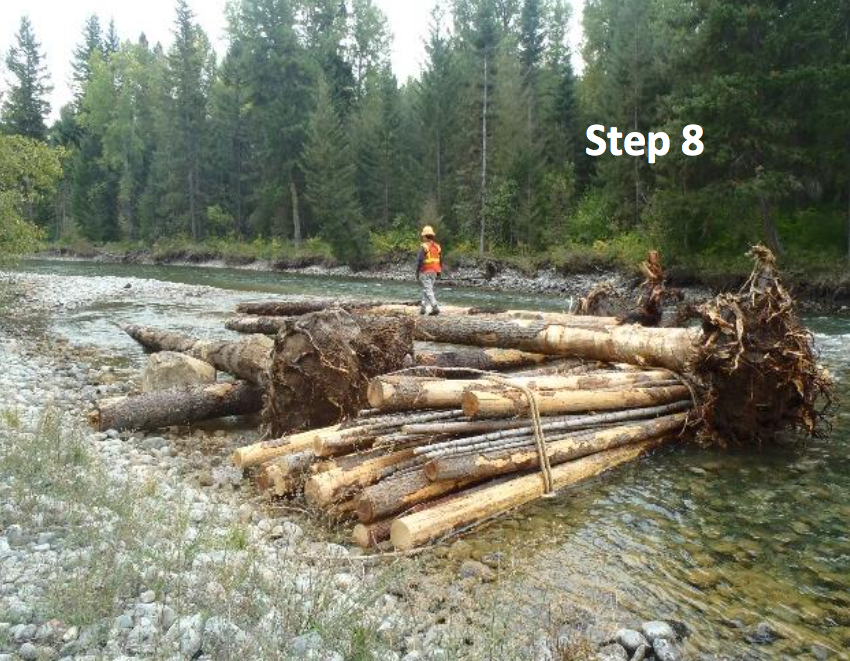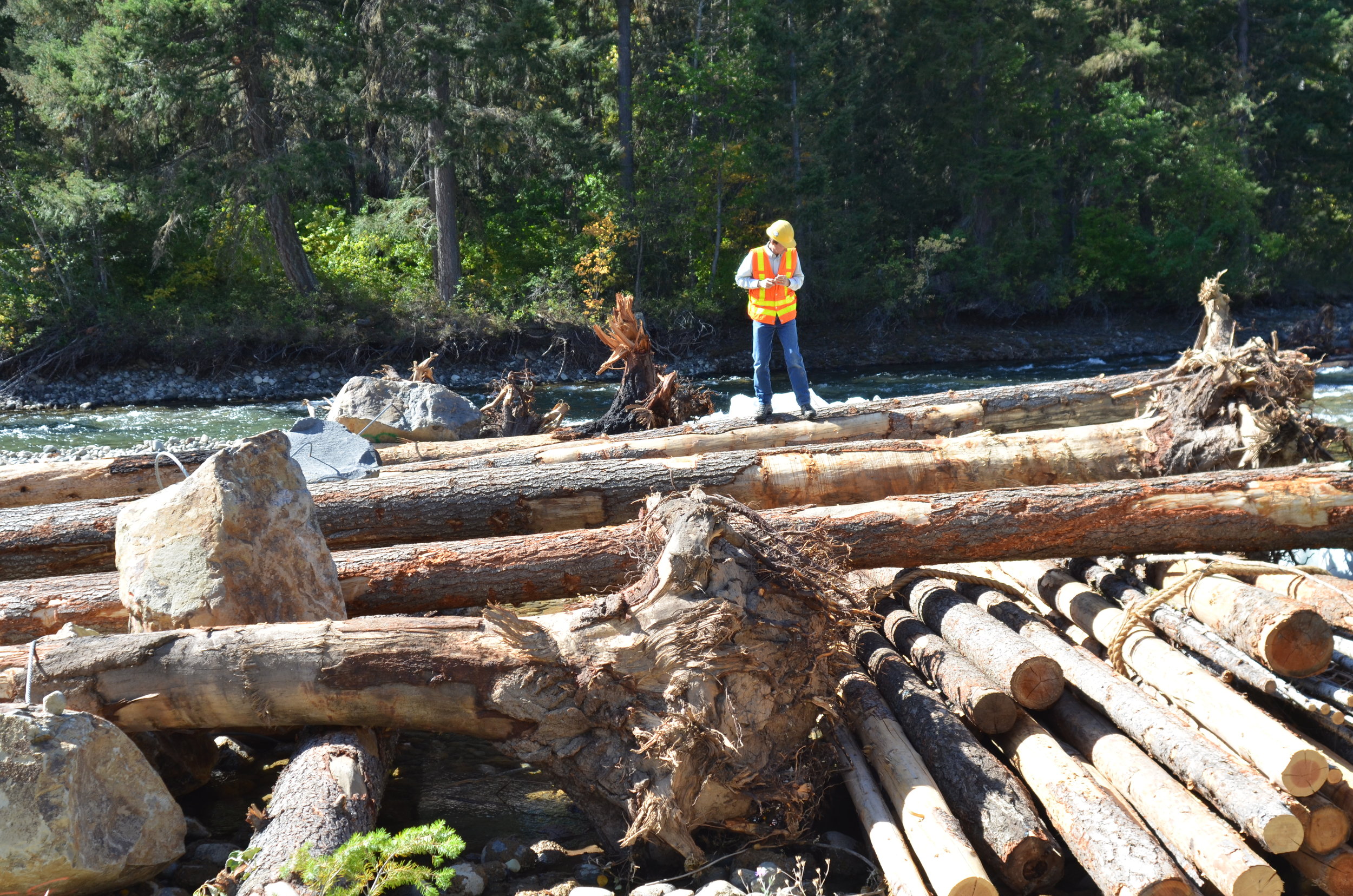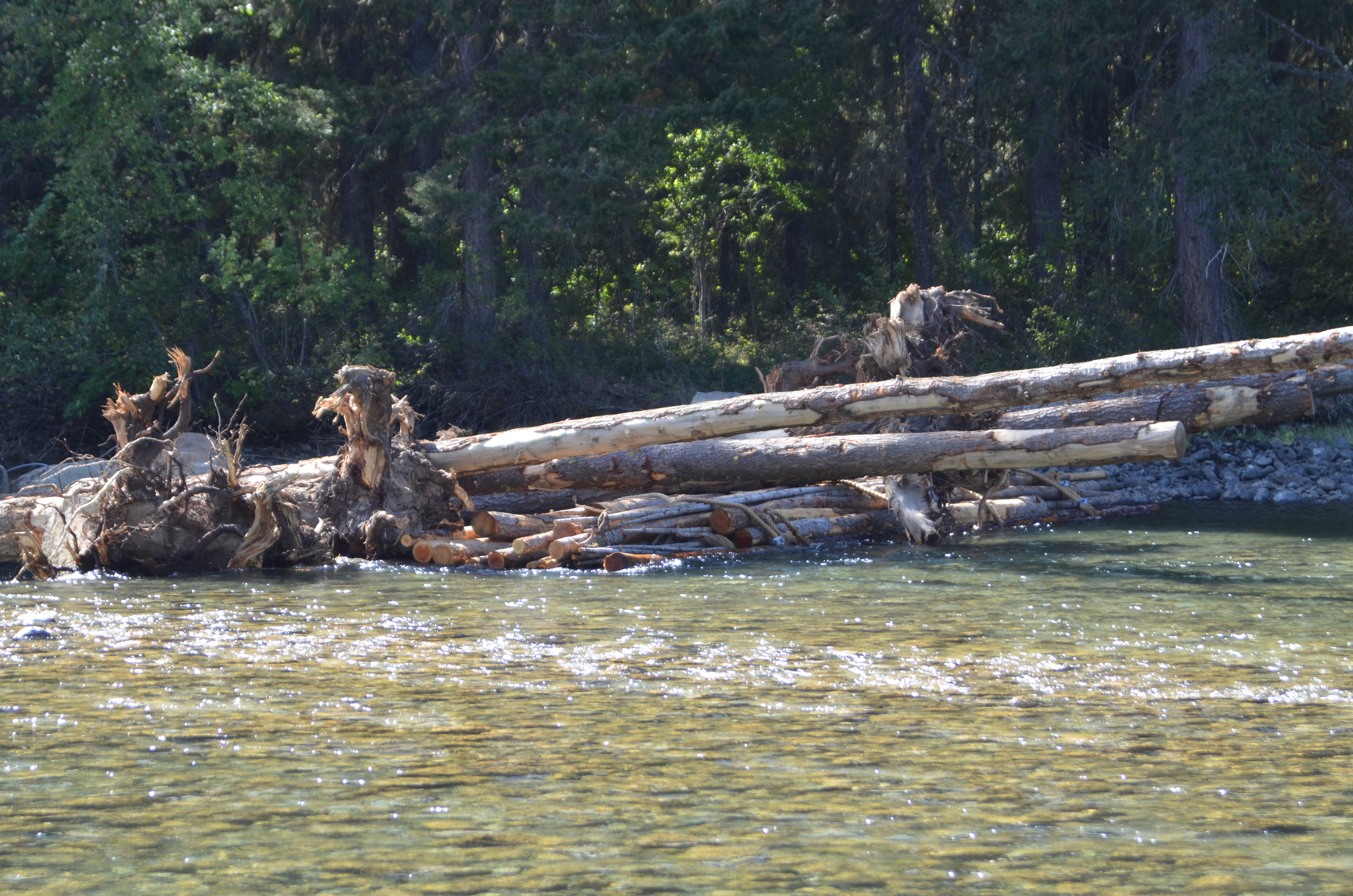Cle Elum River Side Channel Restoration- Phase 2
The primary goal of the project was to expand and enhance salmon and steelhead spawning and rearing habitat by introducing perennial flow into 5 stream miles of intermittent side channels in the lower Cle Elum River. Ten engineered log jams were installed within the main river channel to divert water into relic side-channels and create instream habitat complexity. The project reach is located 1-2 miles downstream of the Lake Cle Elum Dam where flows are regulated by water releases for irrigated agriculture. The river’s hydrograph lacks peak winter flows and the incised main-stem channel decreases the river’s ability to maintain dynamic side channel networks. The log jams were strategically placed to increase aquatic habitat diversity by creating pools and gravel bars, raise the local water elevation and deflect flows into side channels that had become dewatered due to damming and channelization of the river in the 1930s. Lack of rearing habitat in the lower Cle Elum River is the primary limiting factor for restoration of salmon and steelhead populations. This project provides channel complexity, increased spawning habitat and refuge from high-velocity irrigation flows for rearing salmonids. The Cle Elum River is a Major Spawning Area for Mid-Columbia Steelhead, Spring Chinook and Coho Salmon in the upper Yakima River basin.
Salmon and steelhead instream habitat restoration goals were clearly achieved. The project successfully opened five stream miles of side channel habitat and reconnected about 240 acres of riparian floodplain in this 2 mile stretch of the Lower Cle Elum River. Beaver have already moved into restored side channels increasing habitat complexity within the project area. Natural fluvial processes are expected to further create habitat benefits for spawning and rearing Steelhead, Spring Chinook, Coho, Sockeye, Bull Trout, Rainbow Trout, Lamprey, and other native fishes and wildlife species the Lower Cle Elum River ecosystem.






































































